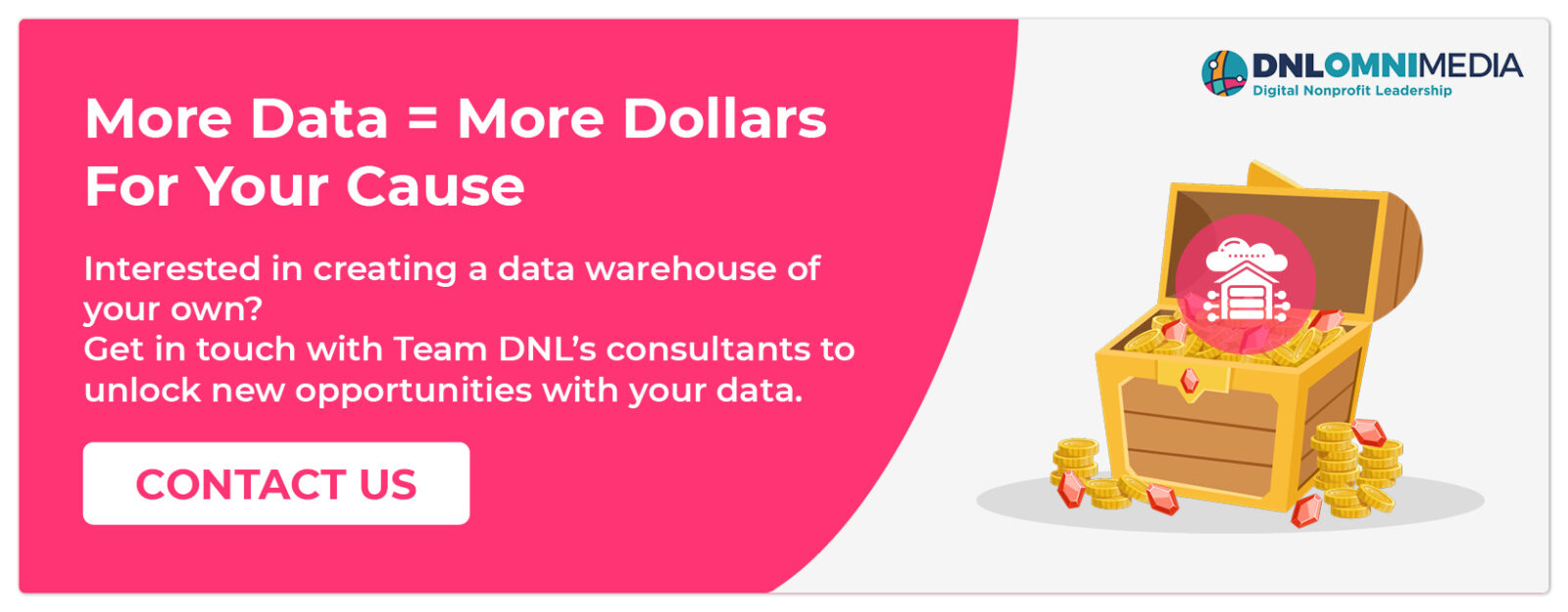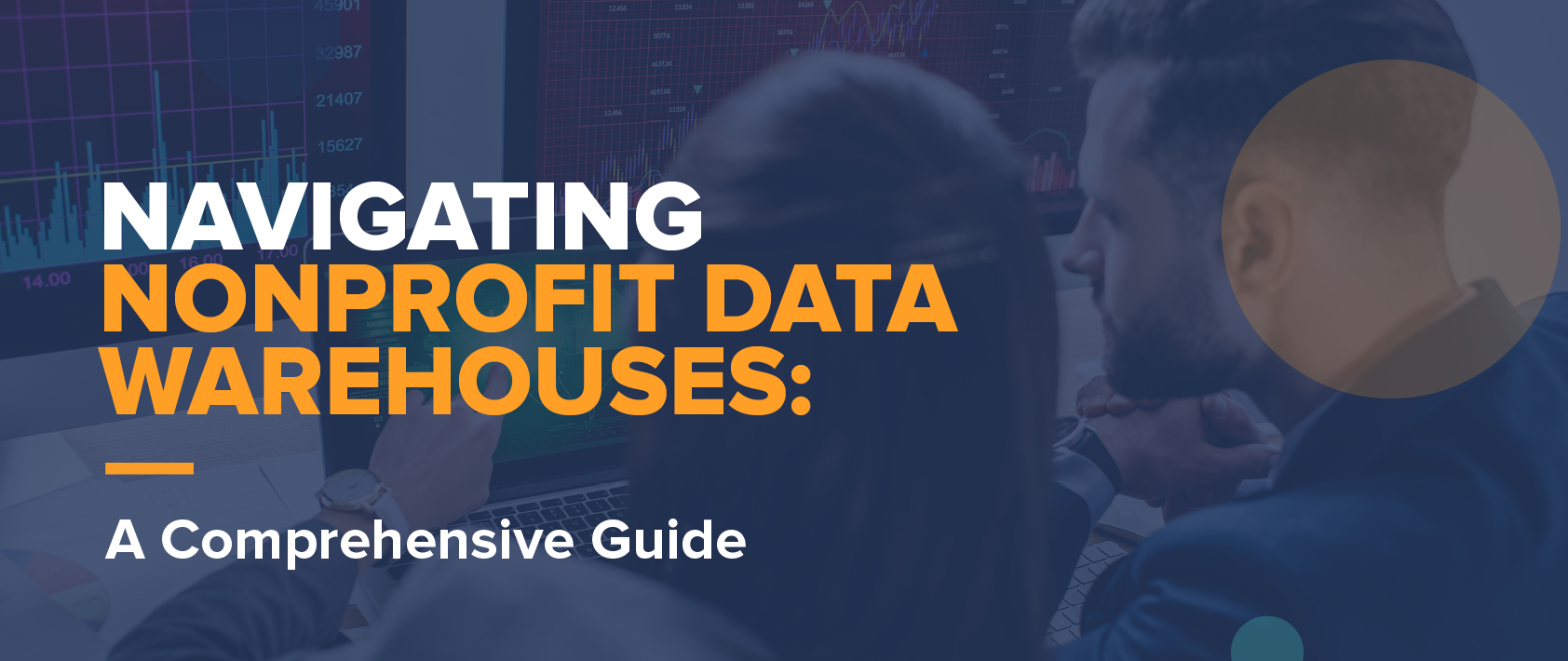Nonprofits collect and generate vast amounts of data, ranging from individual donors’ contact information to program outcomes, but they often struggle with organizing and utilizing the information effectively.
This is why data warehouses can have such a significant impact on nonprofits.
A nonprofit data warehouse provides a unified view of an organization’s data, enabling nonprofits to gain valuable insights, make data-driven decisions, and optimize their operations. However, navigating the complexities of setting up a data warehouse can be challenging, even for the most technologically savvy organizations.
In this guide, we’ll explore nonprofit data warehouses, the steps to configure one, and how to harness the power of your data effectively. We’ll cover:
- What is a Nonprofit Data Warehouse?
- Benefits of Data Warehousing for Nonprofits
- Challenges of Data Warehousing for Nonprofits
- 6 Steps to Get Started

Whether you’re new to data warehousing or seeking to enhance your existing data infrastructure, these insights will help you navigate the intricacies of setting up your own data warehouse.
What is a Nonprofit Data Warehouse?
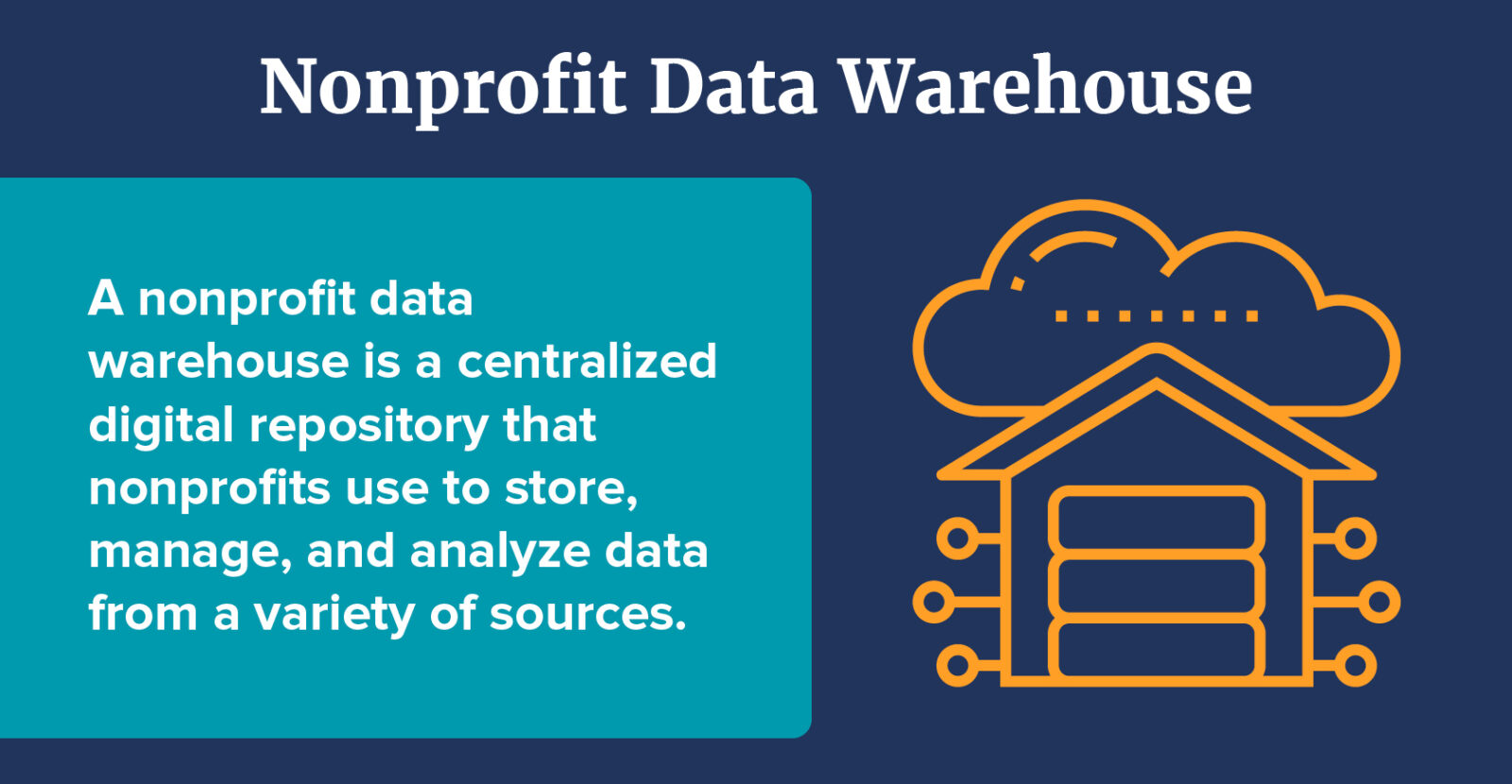
A nonprofit data warehouse is a centralized digital repository that nonprofits use to store, manage, and analyze their data. It’s designed to consolidate and integrate data from various sources, including CRM systems, fundraising software, financial databases, program management tools, and more.
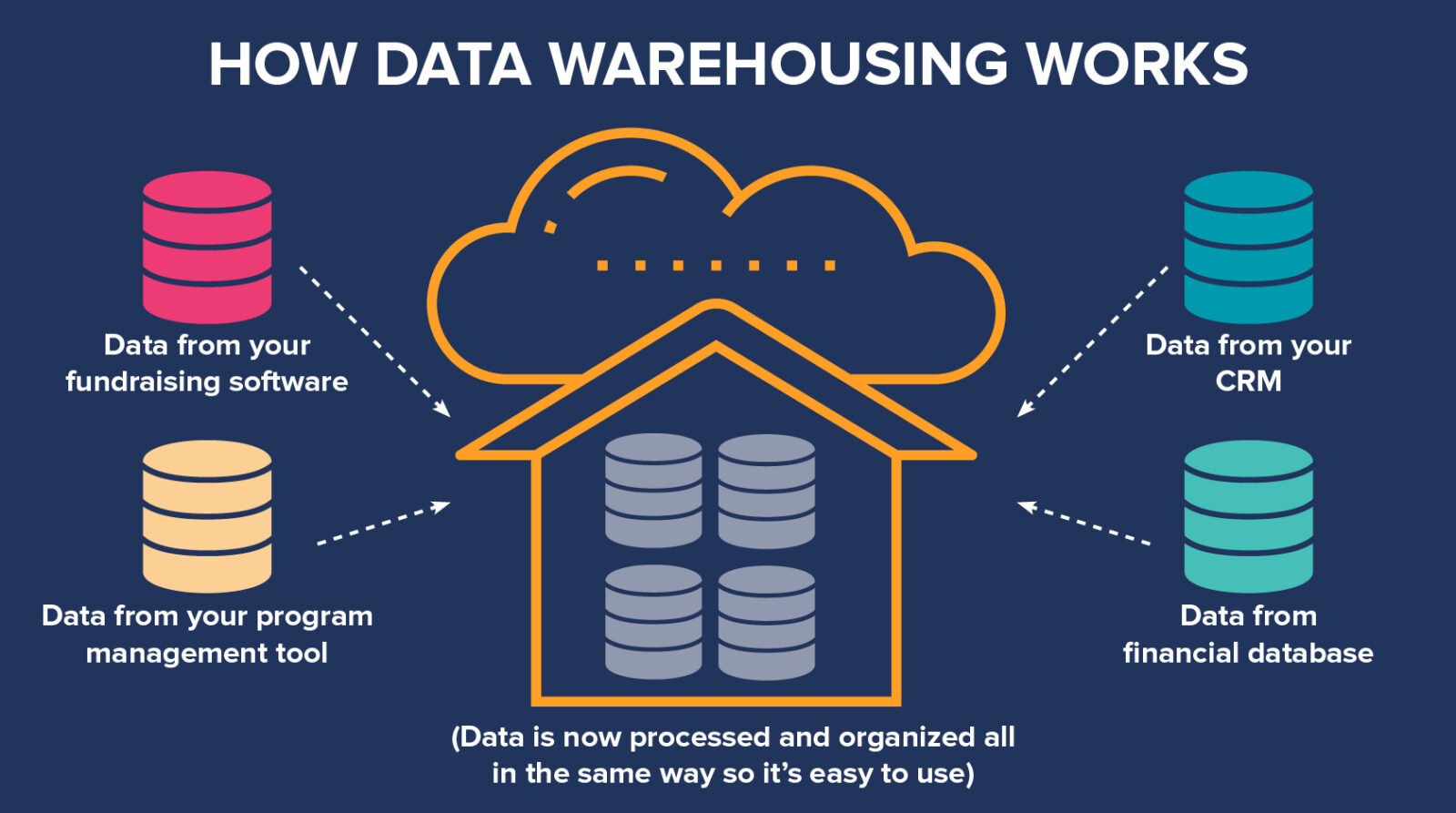
This centralization allows nonprofits to process and organize data from multiple places so that it’s easy to understand and use altogether. This way, these organizations can enjoy the functionality of multiple tools while also keeping and analyzing their data in one place, empowering them to make data-driven decisions and enhance their overall operational efficiency.
It’s important to note that every nonprofit’s data warehousing needs and use cases will vary depending on everything from their cause to supporter base size to strategic goals and more. However, here are some potential use cases to help you visualize the role a data warehouse could play in your organization’s operations:
- Identify specific audience segments for marketing purposes. Segmentation is the process of grouping your supporters based on shared characteristics. To fully analyze your audience’s behavior, demographics, and preferences, you could use your data warehouse to look at data from events, online interactions, giving histories, and more.
- Monitor program impact. For a holistic view of your programs’ performance, you might pull together information about program outcomes and participant demographics. Looking at this data together will give you a better understanding of what works in your programs and what could be improved. Additionally, this makes it a breeze to provide past impact reports and future projections for grant proposals.
- Strengthen your financial reporting efforts. Say you rely on one platform for your organization’s accounting work, another for grant management, and another for online fundraising. By bringing together all of your financial information into your data warehouse, you can more easily generate accurate financial reports and ensure you’re using your resources effectively.
- Conduct effective strategic planning. A strategic plan helps you bring the vision for your organization’s future to fruition by setting goals and objectives. With all of your data in one place, you can have a big-picture view of your organization’s operations that can help you set the right strategic goals.
Consider how your organization could benefit from data warehousing. Do you need support when it comes to fully understanding your marketing audience? Are you hoping to gain a better understanding of your membership program and how it’s working, or to manage event-related data more efficiently? No matter the specifics, a data warehouse offers the versatility to support your needs.
Related Terms to Note
As you continue learning about nonprofit data warehouses, you may run into a few related terms that are worth knowing:
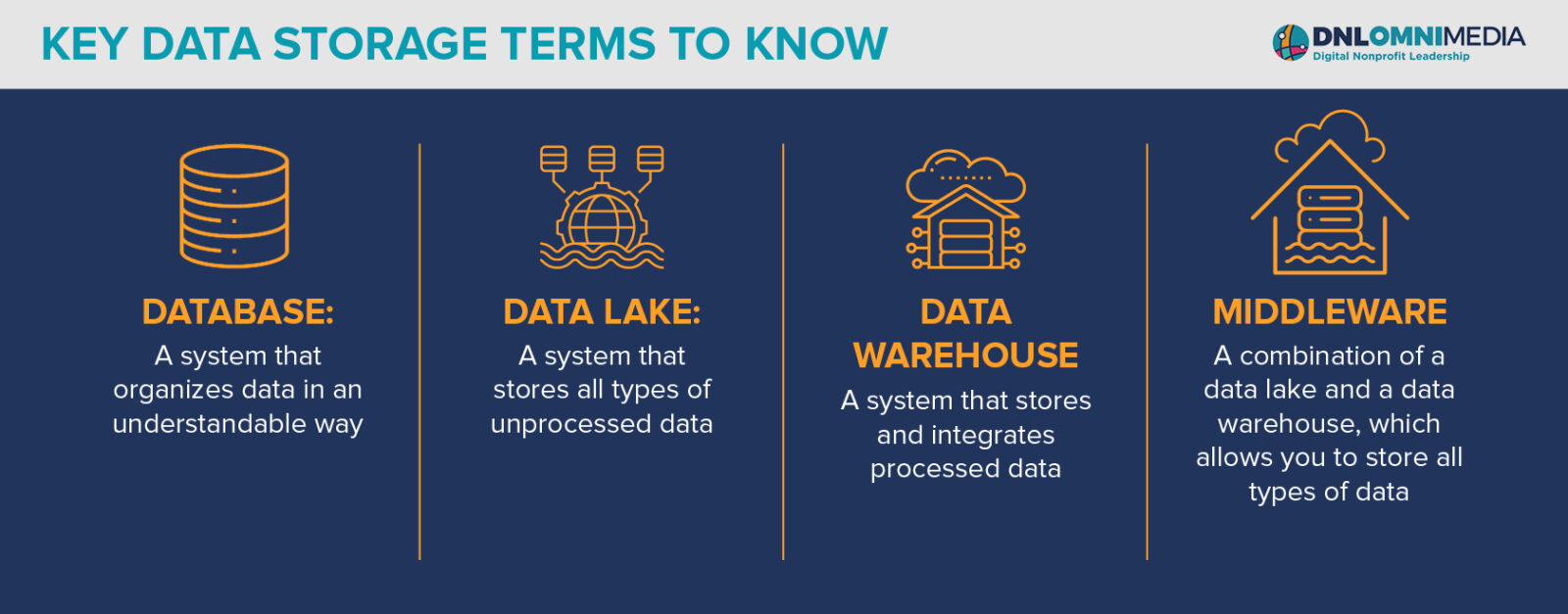
- Database: Any system, like a CRM, that organizes data in an understandable way
- Data Lake: A system that stores all types of unprocessed or raw data, from database tables to image files (as opposed to a data warehouse, which stores data that has been processed and unified in a way that makes it easy for your organization to analyze)
- Middleware: A combination of a data lake and a data warehouse that allows you to store both processed and unprocessed data in one place
Each of these systems can have a place in your data management and analytics strategy, but ultimately a data warehouse will allow you to get more value out of your data and bridge the gap between separate data-collecting tools.
Is Data Warehousing Right for Your Nonprofit?
When nonprofits need or want to add new elements to their tech stacks, they have to take their size and capacity into consideration. For instance, one CRM system may be a better fit for small organizations while another is built for enterprise-level needs. But with data warehouses, the answers aren’t so cut-and-dry.
Here are a few signs that a data warehouse might be useful for your organization, no matter your size:
- You have a robust technology stack made up of multiple systems and like the various features at your disposal across the systems—meaning you’re not interested in a one-size-fits-all solution to replace them.
- You want to track a variety of interactions between your organization and its supporters, going beyond the basics.
- You want to tap into the integrations between your systems or have systems that have open endpoints, allowing you to customize them to your needs.
Beyond recognizing these signs in your organization, you may want to work with an outside expert who will help you determine whether data warehousing could help your nonprofit’s operations (more on this below).
Benefits of Data Warehousing for Nonprofits
Still on the fence about using a data warehouse? Let’s take a closer look at the benefits your organization can experience when you begin data warehousing:
- Streamlined workflows: A data warehouse allows your nonprofit to save time and effort. Instead of manually consolidating data from across sources, you can instead have it all stored and standardized in one place to streamline analysis and interpretation. This also makes it easier for more team members to actively use your data, improving efficiency and productivity.
- Improved decision-making: Nonprofits can make more informed and data-driven decisions with a data warehouse. By consolidating and analyzing data from various sources, organizations gain insights into donor behavior, program effectiveness, and operational efficiency. This data-driven decision-making can lead to more targeted fundraising efforts, better resource allocation, and improved program outcomes.
- Enhanced data quality: A data warehouse helps you integrate your data into one place, but it also offers the opportunity to reinforce your data hygiene practices. This might involve establishing data models and structures that allow you to standardize information from a variety of sources, validating that information, appending your data with additional details, and prioritizing data security. With high-quality data on your side, you can be more confident in the information you have access to and the ways that you use that information.
- Better donor engagement and fundraising: Data warehouses enable nonprofits to segment their donor base and tailor their communication and fundraising strategies accordingly. This empowers fundraisers to more easily identify high-value donors, understand their preferences, and personalize outreach efforts. The end results are more effective fundraising campaigns, increased donor retention, and higher fundraising success rates.
- Effective impact measurement and reporting: Nonprofits rely on data warehouses to track and measure their impact over time. By storing historical data and program outcomes, organizations can demonstrate the effectiveness of their initiatives to donors, grantors, and other stakeholders. This transparency and accountability can help secure funding and support for ongoing projects and future endeavors.
Challenges of Data Warehousing for Nonprofits
On the other hand, there are also some challenges of data warehousing that your nonprofit should be aware of before seeking a solution of your own:
- Complex implementation and integration processes: A data warehouse can be difficult to set up and put into play in your technology stack, especially if your team doesn’t have a lot of technology expertise. To succeed, you’ll need time, knowledge, and a proper technology infrastructure on your side.
- Difficulties with data transformation: Data transformation is the process data from different sources will need to undergo in order for you to view it all in the same format or structure, thus streamlining your analysis tasks. Effective data transformation requires a lot of time and the right skill set to get right and will require your team to handle sensitive information with special care.
- Ongoing effort required to clean and maintain data: Though accurate, validated, and structured data is imperative to your operations and a central aim of data warehousing, keeping up with data hygiene can require a lot of effort. This is especially true for organizations with a large volume of data from a wide variety of sources and organizations that are new to prioritizing data hygiene.
- Change management issues: Anytime a new technology tool is introduced to your organization, you’ll face some growing pains and adoption challenges. You may need to provide training on the purpose and use cases for your data warehouse or take strides to encourage more data-driven thinking in your organization’s workflows to see a worthwhile ROI on warehousing.
The Solution to These Challenges: Working with DNL OmniMedia
To sidestep these challenges and quickly see more of the benefits of data warehousing, consider working with an experienced nonprofit technology consulting firm, like DNL OmniMedia.
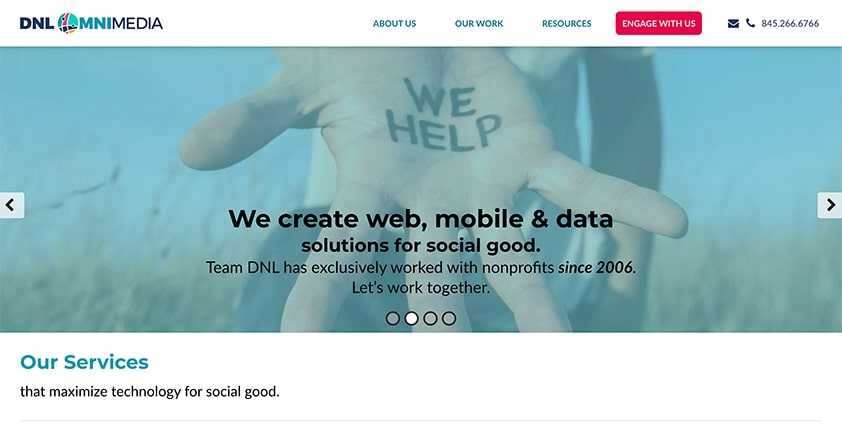
The experts at Team DNL understand that every organization has different goals for its data and unique technology stacks. Whether you are just getting started with data warehousing or want to build a new warehouse, they can help you:
- Build a custom data warehouse in a platform like Amazon Web Services (AWS) or Microsoft Azure, depending on how you want your warehouse to work between your technology solutions
- Integrate your data warehouse with other solutions, like your CRM, fundraising tools, and more
- Create easy-to-use dashboards through platforms like Power BI and Tableau, which allow you to better visualize your data, track key performance indicators (KPIs), and identify changes and trends
- Set up listeners to perform automated actions or update your records when certain criteria are met
- Implement data hygiene best practices to ensure you have access to accurate data and keep sensitive information secure
- Mine and filter your data for useful insights that you can use in your day-to-day operations
Plus, Team DNL offers a variety of services aside from data warehousing assistance, meaning that when you develop a relationship with our team, you’ll always have someone to turn to when other technology needs arise at your organization, whether that looks like creating a new website or conducting a full technology stack audit.

6 Steps to Get Started
Take these steps to build a solid foundation for your data warehousing journey.
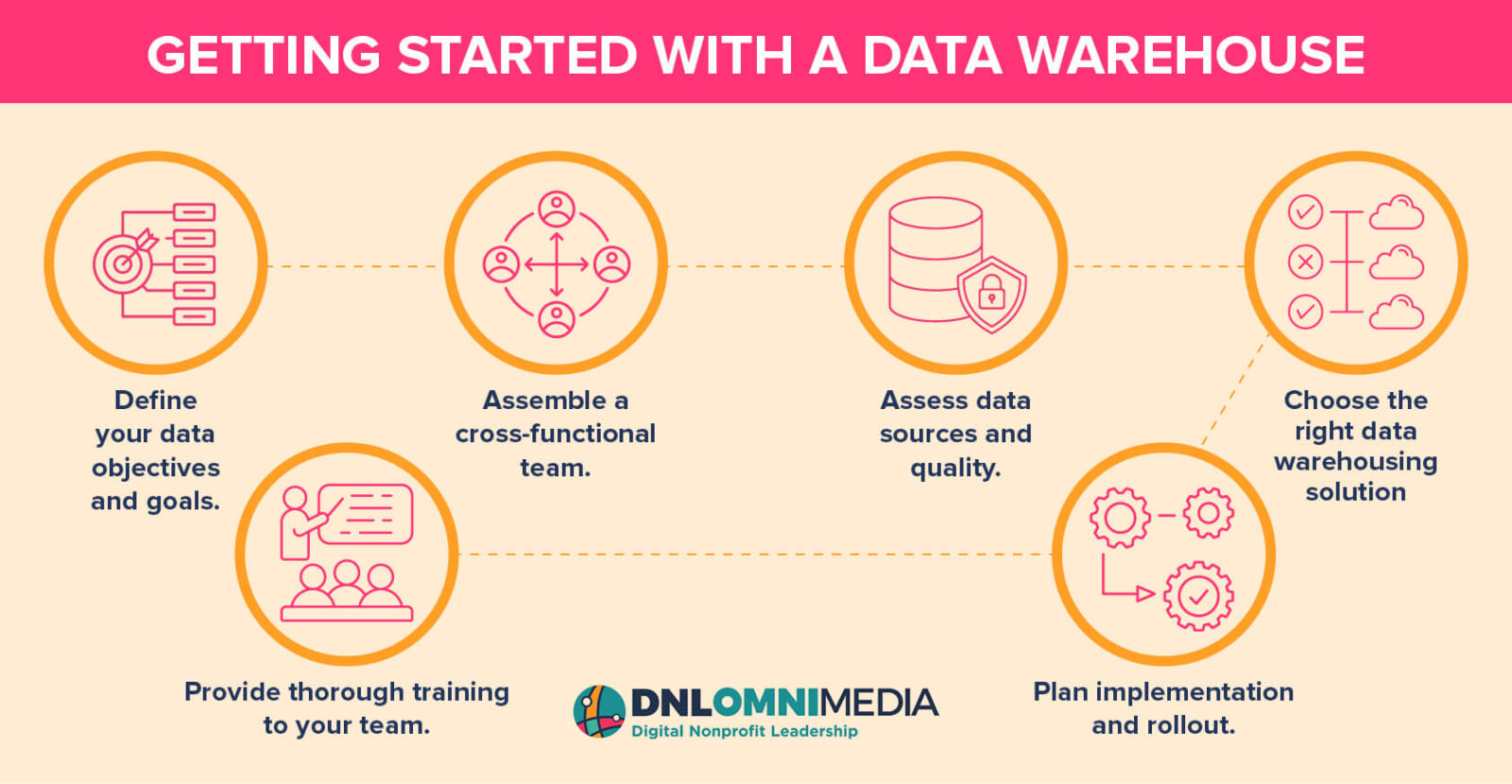
1. Define Your Data Objectives and Goals
Begin by clarifying your nonprofit’s specific data objectives and goals. Identify the key questions you want to answer and the insights you need to gain from your data. It’s essential to understand your needs so they can guide the entire process.
2. Assemble a Cross-Functional Team
Create a dedicated team that includes members from various departments, such as IT, fundraising, program management, and finance, so that their needs and perspectives are taken into account for the final warehouse product. Ensure each team member understands their role and responsibilities in the data warehousing project.
This is also the point at which you should hire a nonprofit technology consultant. To do so, follow these core steps:
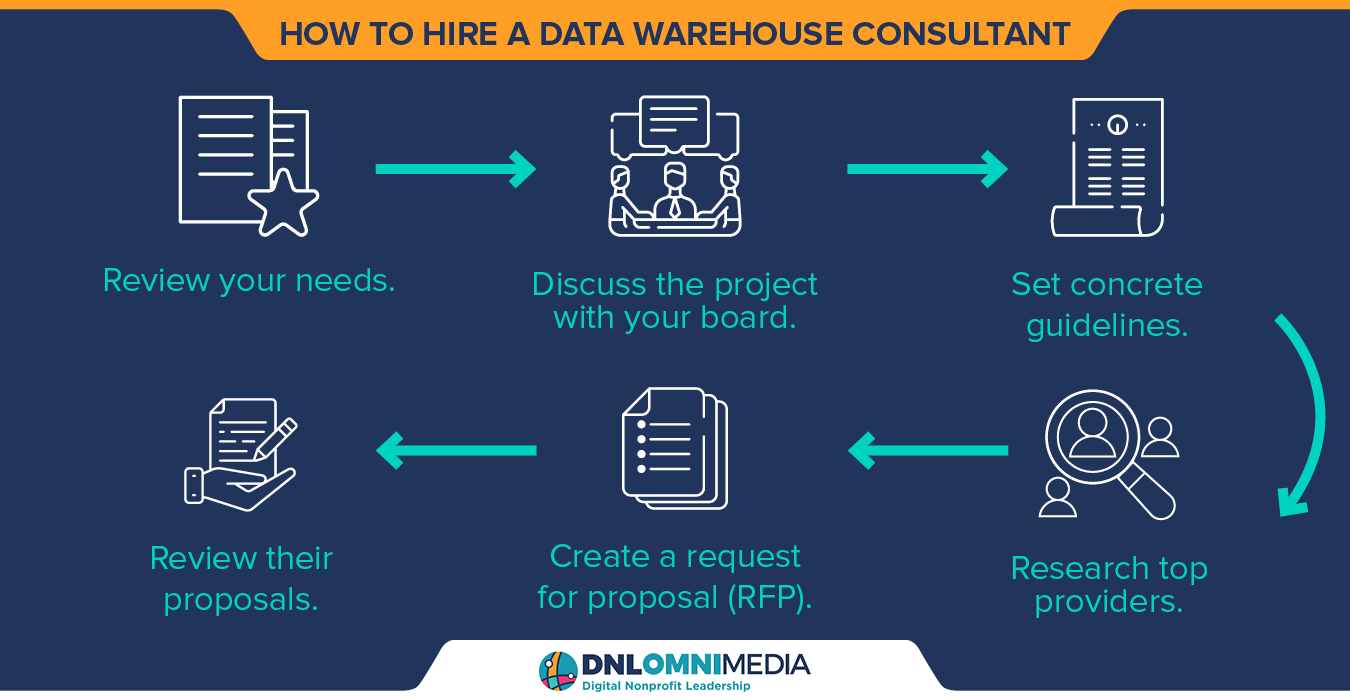
- Review your needs. Look at your data objectives and goals and identify what you need from a data warehousing consultant to reach those goals.
- Discuss the project with your board. Secure board buy-in for hiring a consultant by presenting them with your purposes for working with a consultant, your proposed budget for doing so, and the ROI you expect to see from the engagement.
- Set concrete guidelines. These will include the engagement start and end dates, budget, and expected outcomes or deliverables.
- Research top providers. Beyond reputable online sources, you can ask your nonprofit colleagues for consultant recommendations. Pay special attention to recommendations from colleagues who have undergone similar data warehousing projects.
- Create a request for proposal (RFP). An RFP outlines your project and needs and invites consultants to create proposals explaining how they would approach your project. After you’ve narrowed your potential list of consultants, send your RFP to your top picks.
- Review their proposals. Once your top consultants have gotten back to you with completed proposals, review those proposals and reach out to them to ask any clarifying questions or have any necessary adjustments made to the proposals. Then, pick your consultant and begin working together!
3. Assess Data Sources and Quality
Conduct a thorough assessment of your existing data sources, both internal and external. Evaluate the quality, consistency, and relevance of the data to be integrated into your data warehouse. Clean, standardize, and append data as necessary.
4. Choose the Right Data Warehousing Solution
Select a data warehousing solution that aligns with your nonprofit’s needs, budget, and technical capabilities. Consider factors such as:
- Scalability: Ensure that the data warehouse can scale to accommodate your nonprofit’s growing data needs. It should handle current and future data volumes effectively, allowing for expansion without significant disruption.
- Data integration capabilities: Look for a data warehouse solution that can integrate data from various sources, including fundraising databases, program management systems, financial software, external data feeds, and more. Smooth data integration is crucial for a comprehensive view of your nonprofit’s operations.
- Data quality and governance: Data accuracy and integrity are paramount. Ensure the data warehouse supports data quality checks, data cleansing, and effective data governance practices. Implement security measures to protect sensitive donor information and maintain compliance with data privacy regulations.
- Customization: The ability to customize the data warehouse to your nonprofit’s specific needs is crucial. You should be able to tailor data models, reports, and dashboards to address your organization’s unique requirements and objectives.
- Cost-efficiency: Evaluate the total cost of ownership, including licensing, implementation, and ongoing maintenance. Ensure that the chosen data warehouse solution aligns with your nonprofit’s budget and provides a positive return on investment.
Team DNL recommends a solution like Microsoft Azure or AWS, but there are other options aside from these well-known providers. Seek references from other nonprofit organizations that have successfully implemented the same data warehouse solution. Case studies and testimonials can also provide insights into real-world applications and benefits.
5. Plan Implementation and Rollout
Develop a comprehensive implementation plan that outlines the data warehouse project timeline, milestones, and resource allocation. Consider factors like data modeling, schema design, data integration processes, and data governance. Communicate the plan and progress to all stakeholders, ensuring everyone is on the same page.
Your consultant will handle all of the behind-the-scenes work of setting up your data warehouse and customizing it to meet your needs. When it’s time for quality assurance testing, provide feedback on your new data warehouse and give them time to make any necessary changes.
6. Provide Thorough Training to Your Team
Implementation of your data warehouse will only be successful when your team is fully up and running with your new solution. Working with your consultant, develop a training curriculum that will cover the core purposes of your data warehouse as well as how to use it in day-to-day work.
To ensure that your team retains its knowledge about using your warehouse and can get new team members on board quickly, create documentation about using the data warehouse that you store in an easily accessible area.
The most successful nonprofit organizations know how to use their data to enhance their operations and ultimately do more for their beneficiaries. To get the most out of your data, creating a data warehouse may be the right solution for you and your team.
Connect with a technology consulting firm like DNL OmniMedia to gauge your data warehousing needs and begin a data warehouse project.
In the meantime, check out these additional resources from Team DNL:
- Nonprofit Consulting Firms: 22 Leaders in Their Spaces
- Building Your Nonprofit’s Digital Strategy: A Full Guide
- Find the Right Salesforce Nonprofit Consulting Firm: 7 Steps
- Blackbaud Consulting Services: A Nonprofit’s Guide
- Blackbaud vs. Salesforce: A Full Comparison for Nonprofits
- 15+ Top Nonprofit Websites: Get Inspired & Design Your Own!
